Discover the best Florida ground cover plants to transform your garden. Explore low-maintenance, beautiful options perfect for Florida’s climate and elevate your landscaping today.
Are you looking to spruce up your Florida garden? Ground cover plants might be just what you need! These low-growing plants are perfect for filling in bare spots, controlling weeds and adding beauty to your outdoor space. Let’s explore some of the best ground cover plants for Florida’s unique climate.
Why Choose Ground Cover Plants?
Before we dive into specific plants, let’s talk about why ground cover plants are so great for Florida gardens:
- They help control erosion on slopes and hillsides
- Many are low-maintenance, perfect for busy gardeners
- They can reduce water usage by shading the soil
- Ground covers often prevent weed growth
- They add visual interest and texture to your landscape
Now, let’s look at some top choices for Florida ground cover plants!
1. Asiatic Jasmine (Trachelospermum asiaticum)
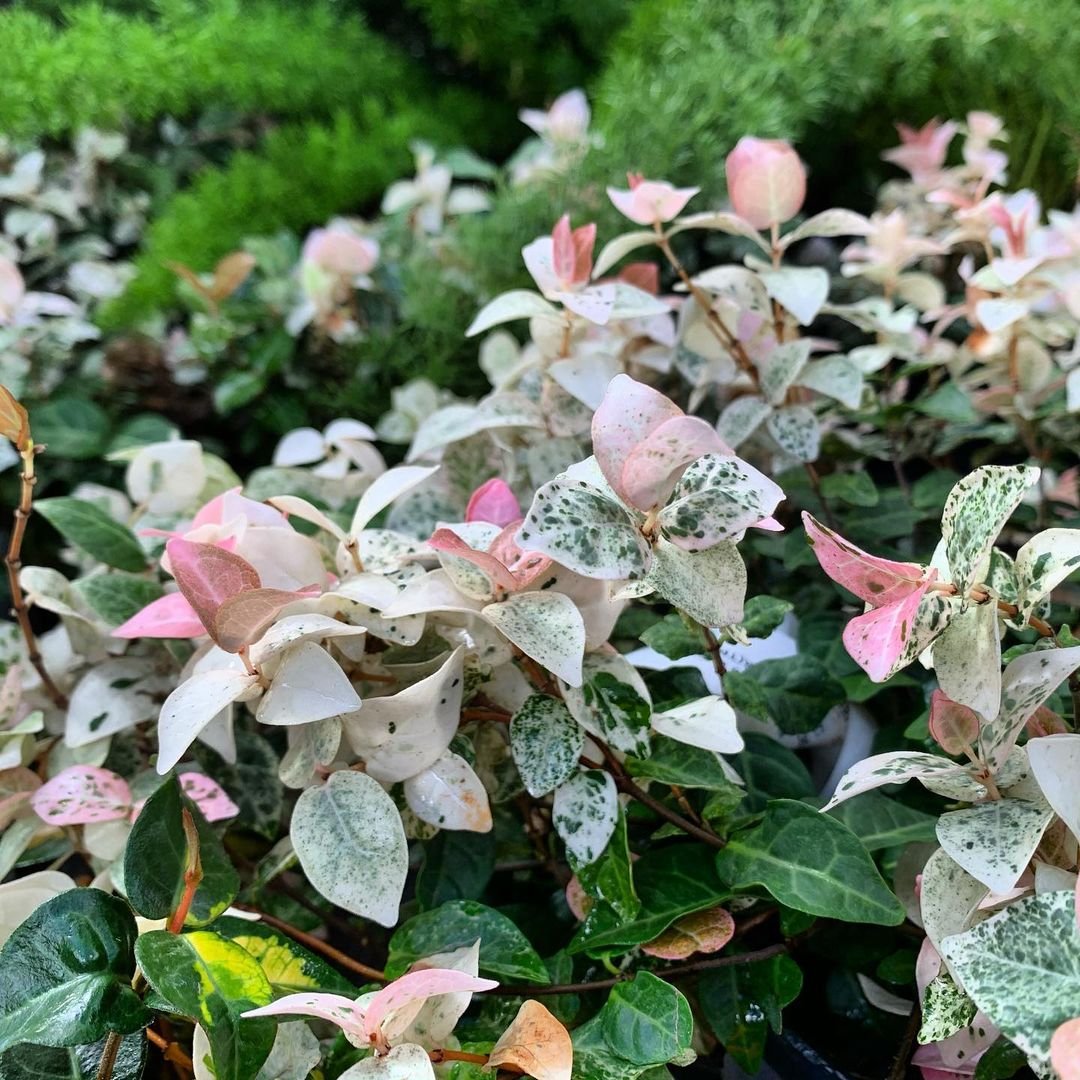
Here’s a short information chart about Asiatic Jasmine (Trachelospermum asiaticum):
| Common Name | Asiatic Jasmine |
|---|---|
| Scientific Name | Trachelospermum asiaticum |
| Family | Apocynaceae |
| Origin | East Asia, specifically China, Japan and Korea |
| Growth Habit | Evergreen vine |
| Foliage | Glossy, dark green leaves |
| Flowers | Small, white, star-shaped blooms in clusters |
| Fragrance | Sweet fragrance, particularly strong in the evenings |
| Uses | Ground cover, climbing vine, container plant |
| Hardiness Zone | USDA zones 7 to 10 |
| Light Requirements | Full sun to part shade |
| Soil Needs | Well-draining, fertile soil |
| Watering Needs | Regular watering; drought tolerant once established |
| Maintenance | Pruning to control growth and maintain shape |
| Special Features | Attracts butterflies and bees; deer resistant |
Asiatic Jasmine is a popular choice for Florida gardens. This evergreen plant forms a dense mat of glossy, dark green leaves. It’s perfect for areas with full sun to partial shade.
Key features:
- Grows 6-18 inches tall
- Spreads quickly
- Drought-tolerant once established
- Low maintenance
According to the University of Florida IFAS Extension, Asiatic Jasmine is an excellent choice for large areas and can even be used as a lawn substitute in shady spots.
2. Perennial Peanut (Arachis glabrata)
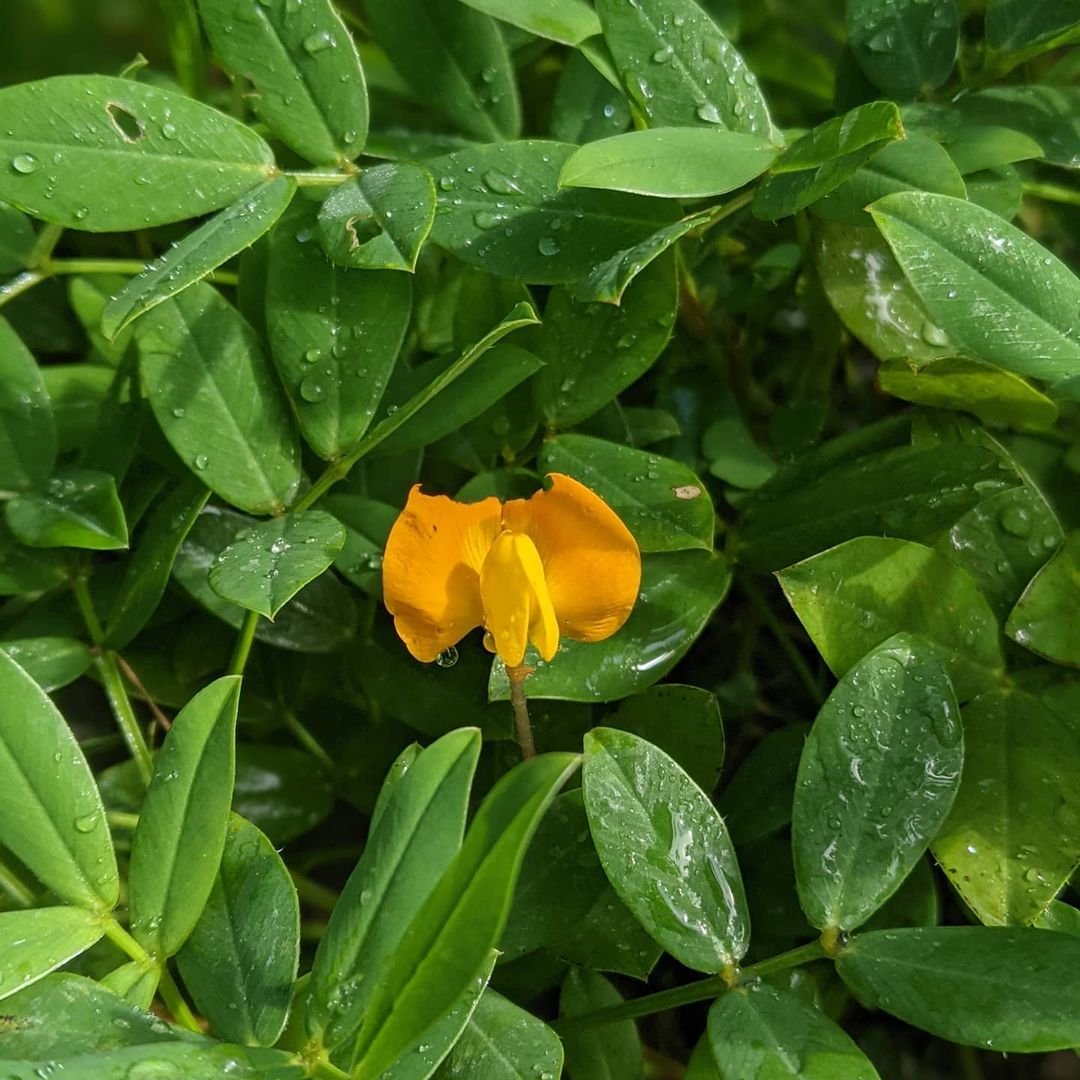
Here’s a concise information chart about Perennial Peanut (Arachis glabrata):
| Common Name | Perennial Peanut |
|---|---|
| Scientific Name | Arachis glabrata |
| Family | Fabaceae (Legume family) |
| Origin | South America |
| Growth Habit | Perennial ground cover |
| Foliage | Dark green, trifoliate leaves |
| Flowers | Yellow, pea-like flowers in clusters |
| Fragrance | Mildly aromatic |
| Uses | Ground cover, erosion control, forage crop |
| Hardiness Zone | USDA zones 8 to 11 |
| Light Requirements | Full sun to part shade |
| Soil Needs | Well-drained, sandy loam |
| Watering Needs | Moderate; drought tolerant once established |
| Maintenance | Low; occasional mowing or trimming |
| Special Features | Nitrogen-fixing, attracts pollinators |
Don’t let the name fool you – this isn’t the peanut you eat! Perennial Peanut is a beautiful, low-growing plant with bright yellow flowers. It’s a great choice for sunny areas in your garden.
Key features:
- Grows 2-4 inches tall
- Produces pretty yellow flowers
- Drought-tolerant
- Nitrogen-fixing (good for soil health)
The Florida-Friendly Landscaping Program recommends Perennial Peanut as an excellent Florida-friendly ground cover option.
3. Sunshine Mimosa (Mimosa strigillosa)
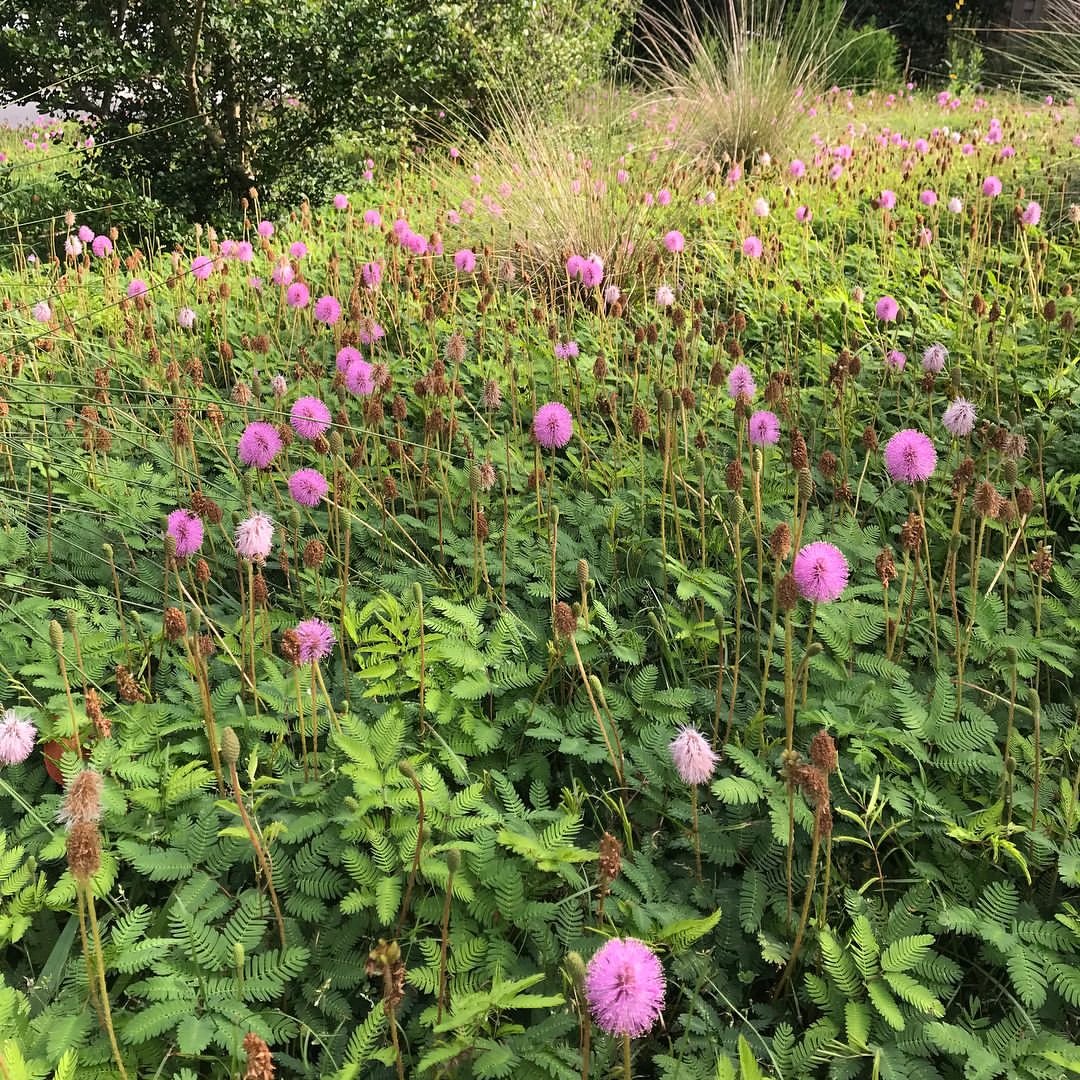
Here’s a brief information chart about Sunshine Mimosa (Mimosa strigillosa):
| Common Name | Sunshine Mimosa |
|---|---|
| Scientific Name | Mimosa strigillosa |
| Family | Fabaceae (Legume family) |
| Origin | Native to southeastern United States |
| Growth Habit | Perennial ground cover |
| Foliage | Small, fern-like leaves |
| Flowers | Pink to lavender puffball-like flowers |
| Fragrance | Mildly aromatic |
| Uses | Ground cover, erosion control, wildlife habitat |
| Hardiness Zone | USDA zones 6 to 10 |
| Light Requirements | Full sun to part shade |
| Soil Needs | Well-drained, sandy to loamy soil |
| Watering Needs | Low; drought tolerant once established |
| Maintenance | Low; occasional trimming to control spread |
| Special Features | Tolerates poor soil, attracts butterflies |
Also known as Powderpuff, this native Florida plant is a charming addition to any garden. It has delicate pink flowers that look like little puffballs.
Key features:
- Grows 3-6 inches tall
- Produces cute pink flowers
- Attracts butterflies
- Tolerates foot traffic
The Florida Native Plant Society notes that Sunshine Mimosa is great for butterfly gardens and can even be used as an eco-friendly lawn alternative.
4. Mondo Grass (Ophiopogon japonicus)
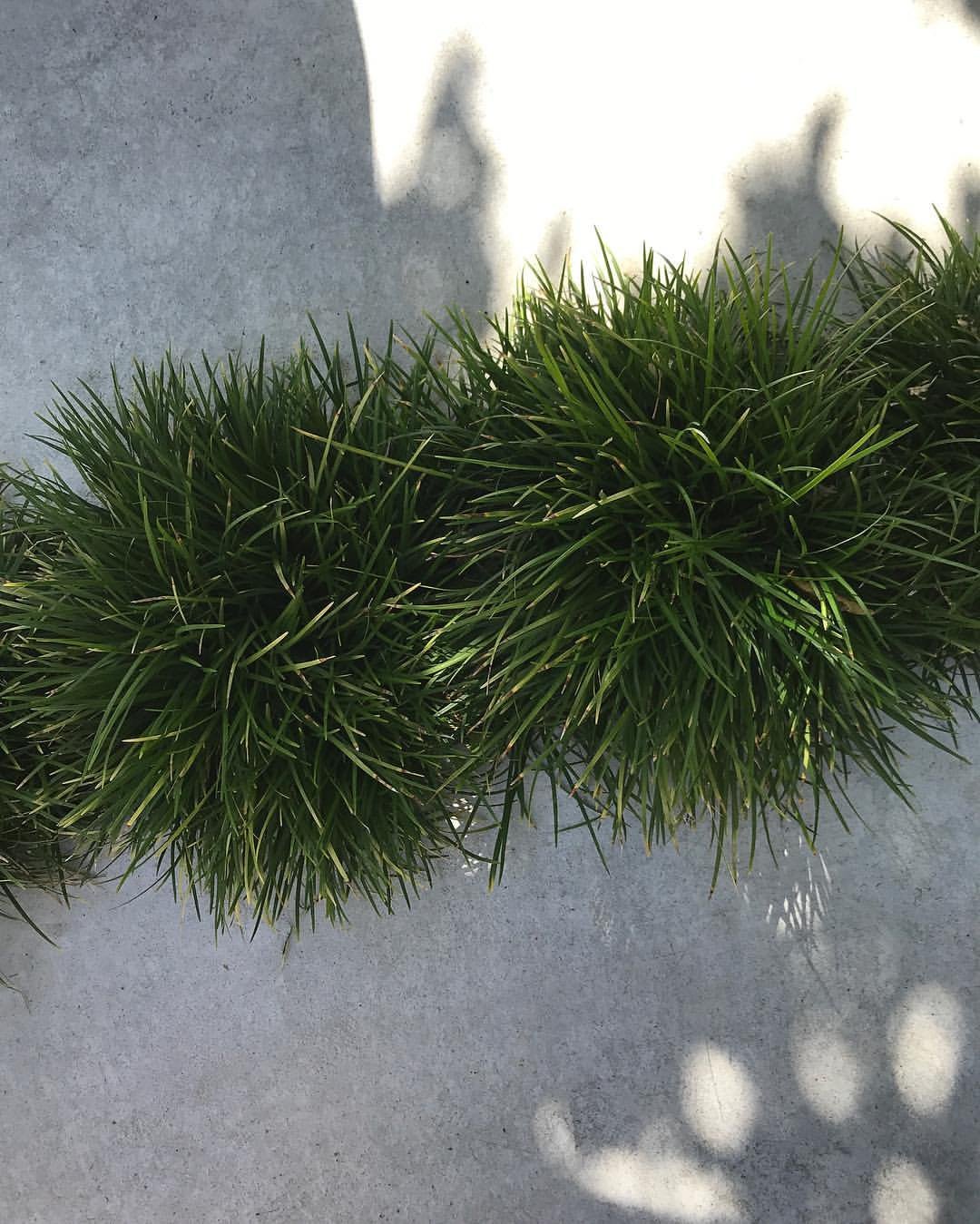
Here’s a concise information chart about Mondo Grass (Ophiopogon japonicus):
| Common Name | Mondo Grass |
|---|---|
| Scientific Name | Ophiopogon japonicus |
| Family | Asparagaceae |
| Origin | East Asia, particularly Japan, China, Korea |
| Growth Habit | Perennial grass-like ground cover |
| Foliage | Narrow, strap-like leaves |
| Flowers | Small, white to pale lilac bell-shaped flowers |
| Fragrance | Slight, sometimes unnoticed |
| Uses | Ground cover, border plant, container plant |
| Hardiness Zone | USDA zones 6 to 10 |
| Light Requirements | Part shade to full shade |
| Soil Needs | Well-drained, fertile soil |
| Watering Needs | Regular; prefers consistently moist soil |
| Maintenance | Low; occasional trimming to maintain shape |
| Special Features | Evergreen foliage, spreads by rhizomes |
Mondo Grass is a versatile ground cover that looks a bit like a miniature lawn. It’s perfect for shady areas where other plants might struggle.
Key features:
- Grows 4-8 inches tall
- Forms dense, grass-like clumps
- Tolerates shade well
- Low maintenance
The Clemson Cooperative Extension provides detailed information on planting and caring for Mondo Grass.
5. Beach Sunflower (Helianthus debilis)
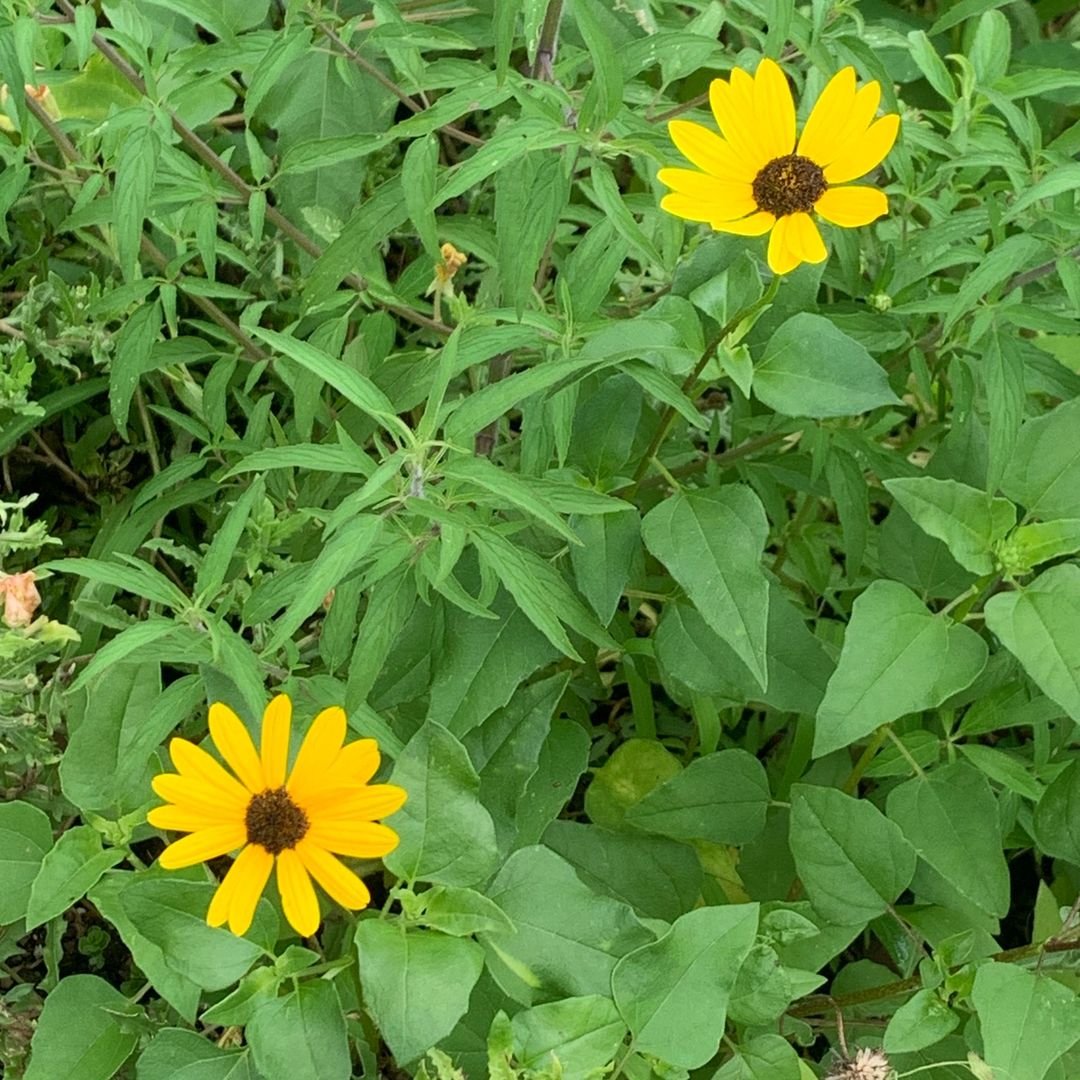
Here’s a concise information chart about Beach Sunflower (Helianthus debilis):
| Common Name | Beach Sunflower |
|---|---|
| Scientific Name | Helianthus debilis |
| Family | Asteraceae (Aster family) |
| Origin | Native to coastal regions of southeastern USA |
| Growth Habit | Perennial herbaceous plant |
| Foliage | Bright green, lance-shaped leaves |
| Flowers | Bright yellow, daisy-like flowers |
| Fragrance | Mild, pleasant |
| Uses | Ground cover, erosion control, beach stabilization |
| Hardiness Zone | USDA zones 8 to 11 |
| Light Requirements | Full sun |
| Soil Needs | Well-drained, sandy soil |
| Watering Needs | Drought tolerant once established |
| Maintenance | Low; pruning to maintain shape |
| Special Features | Salt tolerance, attracts butterflies |
For coastal gardens, Beach Sunflower is an excellent choice. This native Florida plant is salt-tolerant and loves sandy soil.
Key features:
- Grows 1-2 feet tall
- Produces bright yellow flowers
- Attracts butterflies and birds
- Drought-tolerant
The Florida Wildflower Foundation recommends Beach Sunflower for its ability to stabilize dunes and provide food for wildlife.
6. Coontie (Zamia integrifolia)
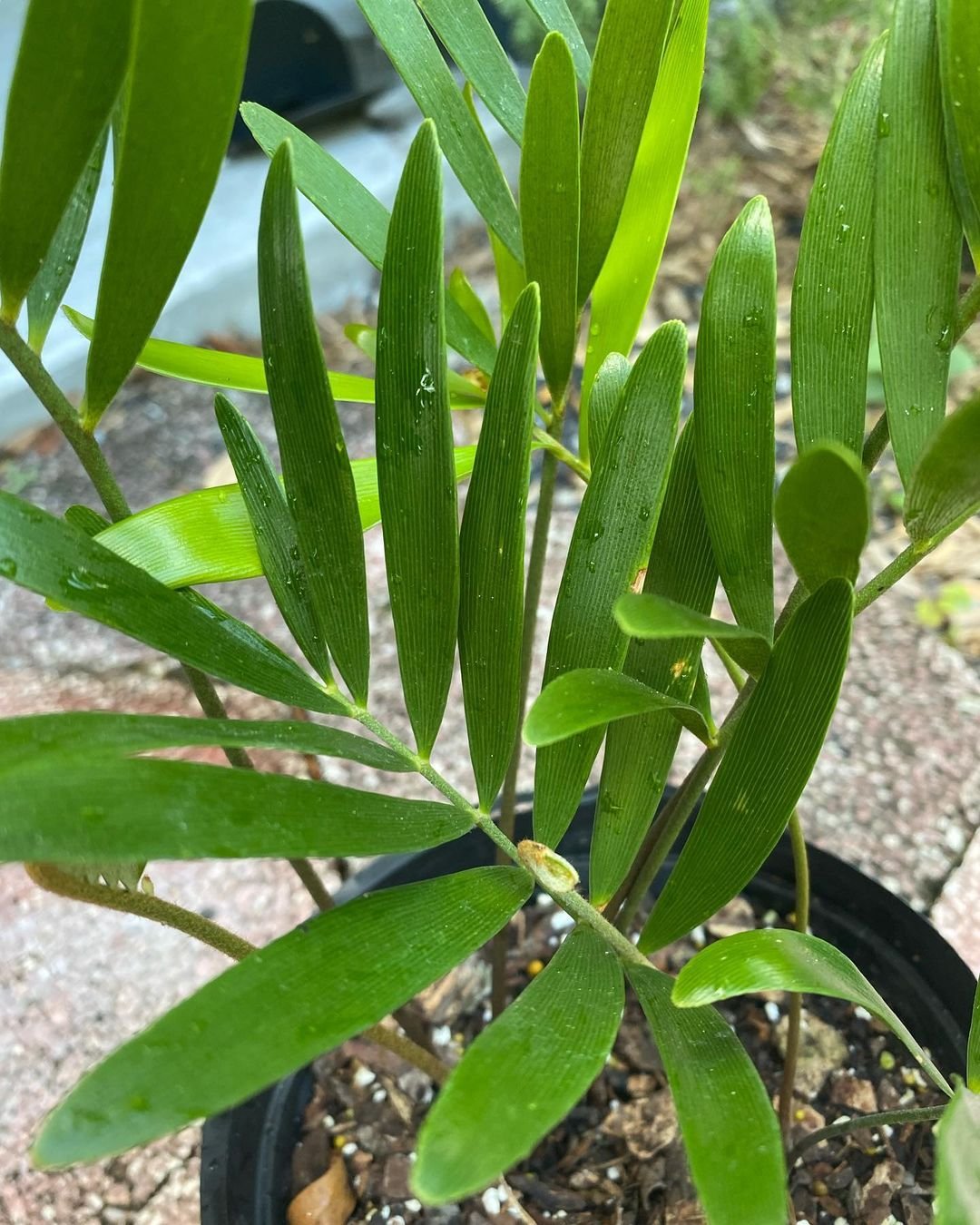
Here’s a concise information chart about Coontie (Zamia integrifolia):
| Common Name | Coontie |
|---|---|
| Scientific Name | Zamia integrifolia |
| Family | Zamiaceae (Cycad family) |
| Origin | Southeastern United States (Florida, Georgia) |
| Growth Habit | Slow-growing cycad |
| Foliage | Dark green, fern-like leaves |
| Flowers | Cone-like structures; non-showy |
| Fragrance | No significant fragrance |
| Uses | Ornamental plant, landscaping, native gardens |
| Hardiness Zone | USDA zones 8 to 10 |
| Light Requirements | Partial shade to full sun |
| Soil Needs | Well-drained, sandy soil |
| Watering Needs | Drought tolerant once established |
| Maintenance | Low; pruning old fronds as needed |
| Special Features | Dioecious (separate male and female plants), tough and resilient |
Coontie is a unique Florida native that looks a bit like a small palm or fern. It’s actually a cycad, an ancient type of plant that’s been around since the time of dinosaurs!
Key features:
- Grows 2-3 feet tall
- Evergreen
- Very drought-tolerant
- Low maintenance
The University of Florida IFAS Extension notes that Coontie is an excellent choice for shady areas and is very resistant to pests and diseases.
7. Blue Daze (Evolvulus glomeratus)
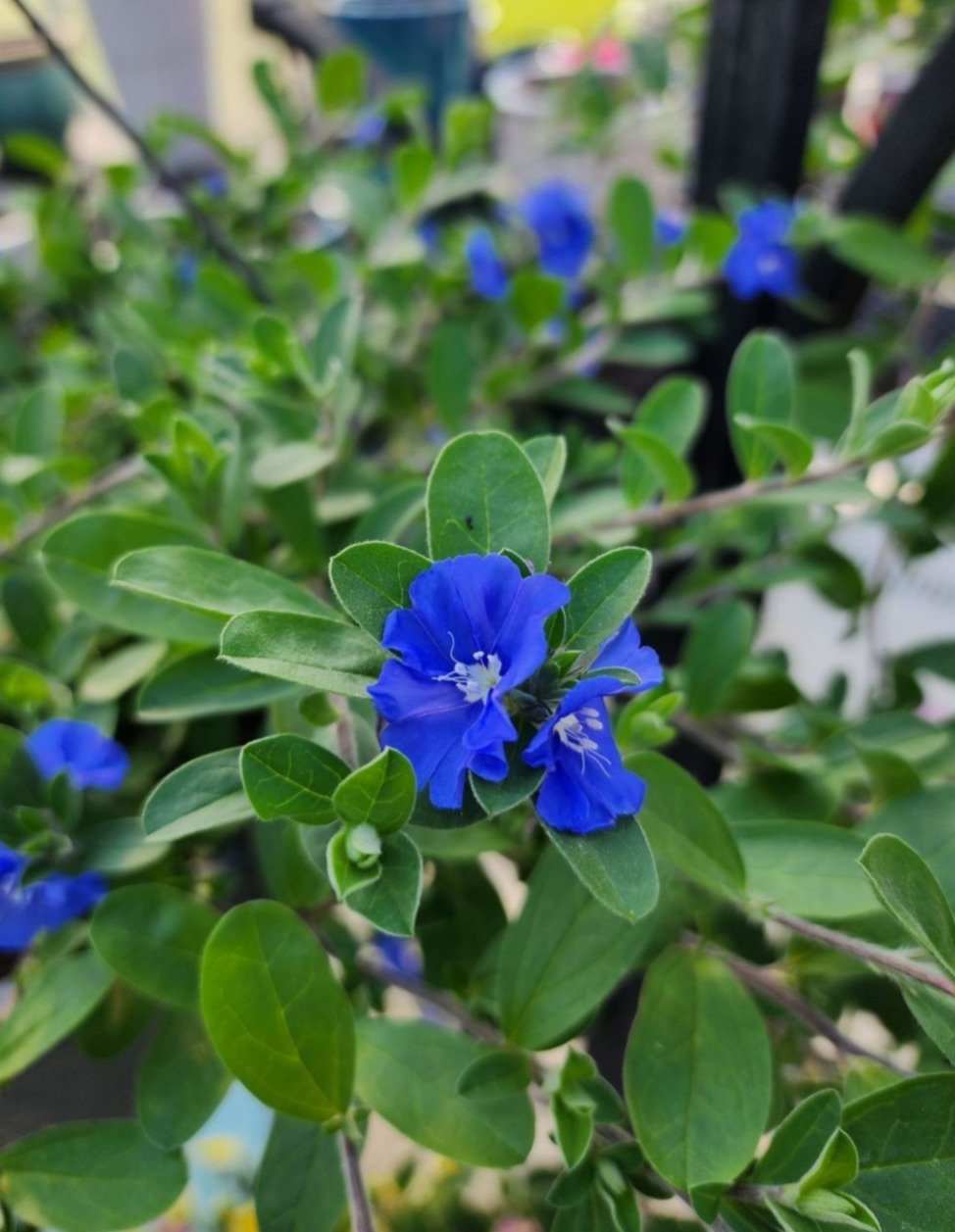
Here’s a concise information chart about Blue Daze (Evolvulus glomeratus):
| Common Name | Blue Daze |
|---|---|
| Scientific Name | Evolvulus glomeratus |
| Family | Convolvulaceae (Morning Glory family) |
| Origin | Brazil and Paraguay |
| Growth Habit | Herbaceous perennial |
| Foliage | Small, oval-shaped, silvery-green leaves |
| Flowers | Bright blue, trumpet-shaped blooms |
| Fragrance | Mild, sweet |
| Uses | Ground cover, container plant, bedding plant |
| Hardiness Zone | USDA zones 8 to 11 |
| Light Requirements | Full sun |
| Soil Needs | Well-drained, fertile soil |
| Watering Needs | Regular; prefers evenly moist soil |
| Maintenance | Low; deadheading spent flowers encourages bloom |
| Special Features | Drought tolerant, attracts butterflies |
If you’re looking for a pop of color, Blue Daze might be perfect for you. This low-growing plant produces beautiful blue flowers almost year-round in Florida.
Key features:
- Grows 6-12 inches tall
- Produces pretty blue flowers
- Drought-tolerant once established
- Attracts butterflies
The University of Florida IFAS Gardening Solutions website provides great information on growing and caring for Blue Daze.
8. Creeping Fig (Ficus pumila)
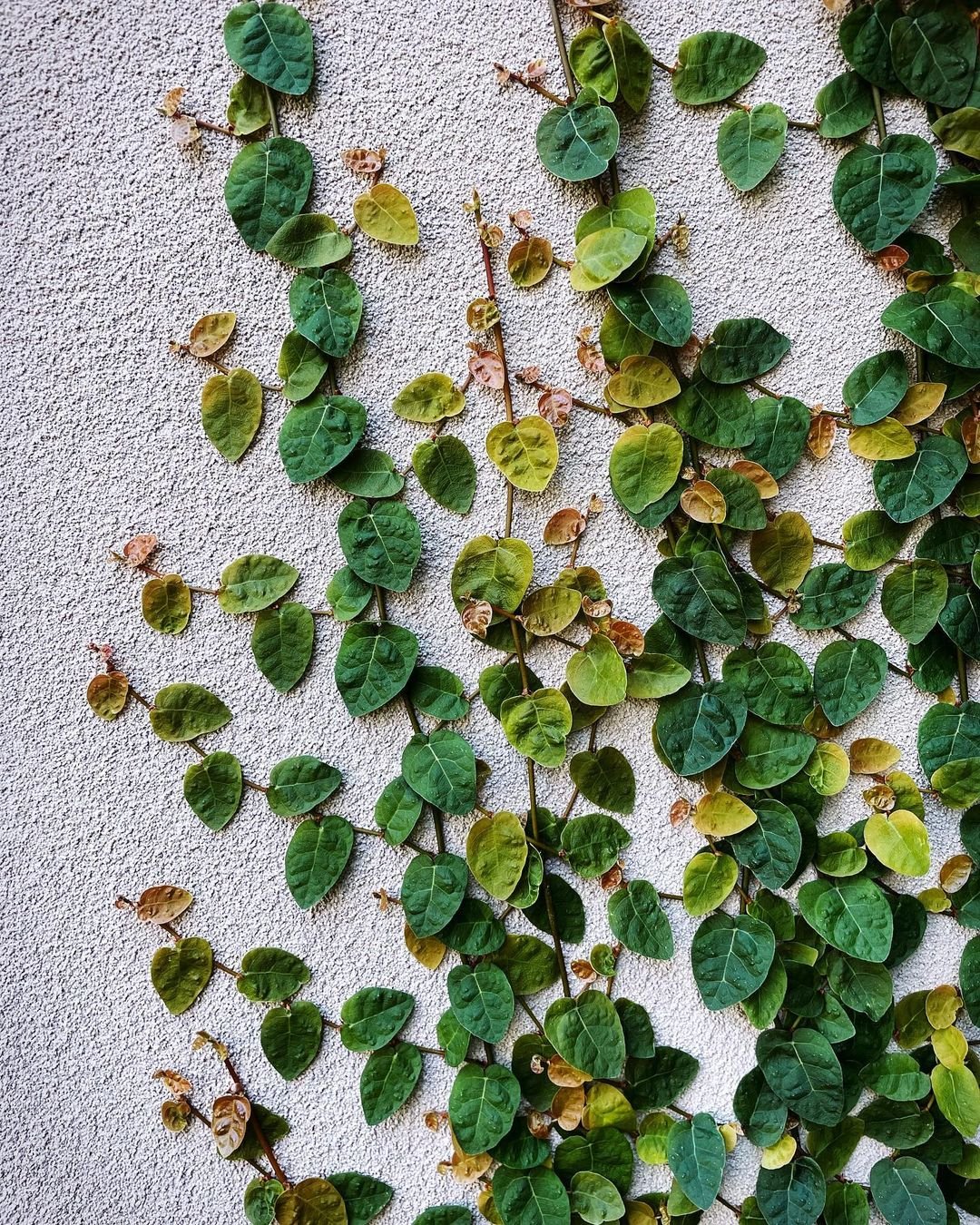
Here’s a concise information chart about Creeping Fig (Ficus pumila):
| Common Name | Creeping Fig |
|---|---|
| Scientific Name | Ficus pumila |
| Family | Moraceae (Mulberry family) |
| Origin | East Asia, particularly China and Japan |
| Growth Habit | Vigorous, evergreen climbing vine |
| Foliage | Small, heart-shaped leaves |
| Flowers | Inconspicuous; rarely blooms indoors |
| Fragrance | None |
| Uses | Ground cover, climbing vine, container plant |
| Hardiness Zone | USDA zones 8 to 11 |
| Light Requirements | Part shade to full shade |
| Soil Needs | Well-drained, fertile soil |
| Watering Needs | Regular; prefers consistently moist soil |
| Maintenance | Moderate; prune to control growth |
| Special Features | Adheres to surfaces with aerial rootlets |
Creeping Fig is a versatile plant that can be used as a ground cover or to cover walls and fences. It’s a fast grower that forms a dense mat of small, heart-shaped leaves.
Key features:
- Grows 6-12 inches tall as ground cover
- Can climb walls and fences
- Tolerates shade well
- Low maintenance
The Texas A&M AgriLife Extension provides useful information on Creeping Fig, which grows well in Florida despite being featured on a Texas website.
9. Liriope (Liriope muscari)
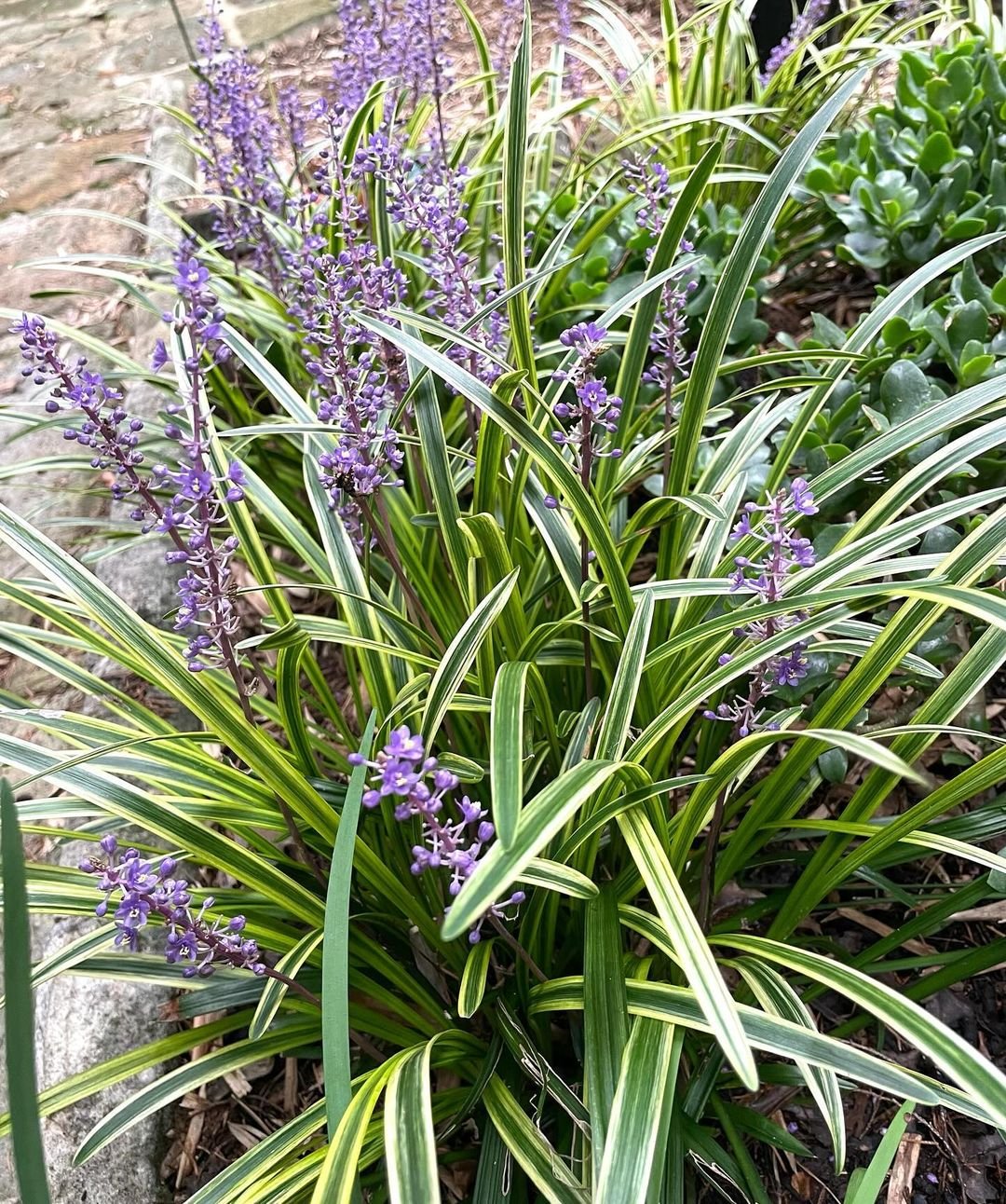
Here’s a concise information chart about Liriope (Liriope muscari):
| Common Name | Liriope |
|---|---|
| Scientific Name | Liriope muscari |
| Family | Asparagaceae (formerly Liliaceae) |
| Origin | East Asia, specifically China and Japan |
| Growth Habit | Clump-forming perennial |
| Foliage | Linear, grass-like leaves |
| Flowers | Purple to lavender, spike-like clusters |
| Fragrance | Mild, sometimes unnoticed |
| Uses | Ground cover, border plant, edging |
| Hardiness Zone | USDA zones 5 to 10 |
| Light Requirements | Part shade to full shade |
| Soil Needs | Well-drained, fertile soil |
| Watering Needs | Regular; prefers consistently moist soil |
| Maintenance | Low; trimming old foliage in late winter |
| Special Features | Evergreen foliage, tolerates dry shade |
Liriope, also known as Lilyturf, is a grass-like plant that’s great for edging or as a ground cover in shady areas.
Key features:
- Grows 12-18 inches tall
- Produces purple or white flower spikes
- Tolerates shade well
- Drought-tolerant once established
The North Carolina State Extension offers detailed information on growing and caring for Liriope.
10. Trailing Lantana (Lantana montevidensis)
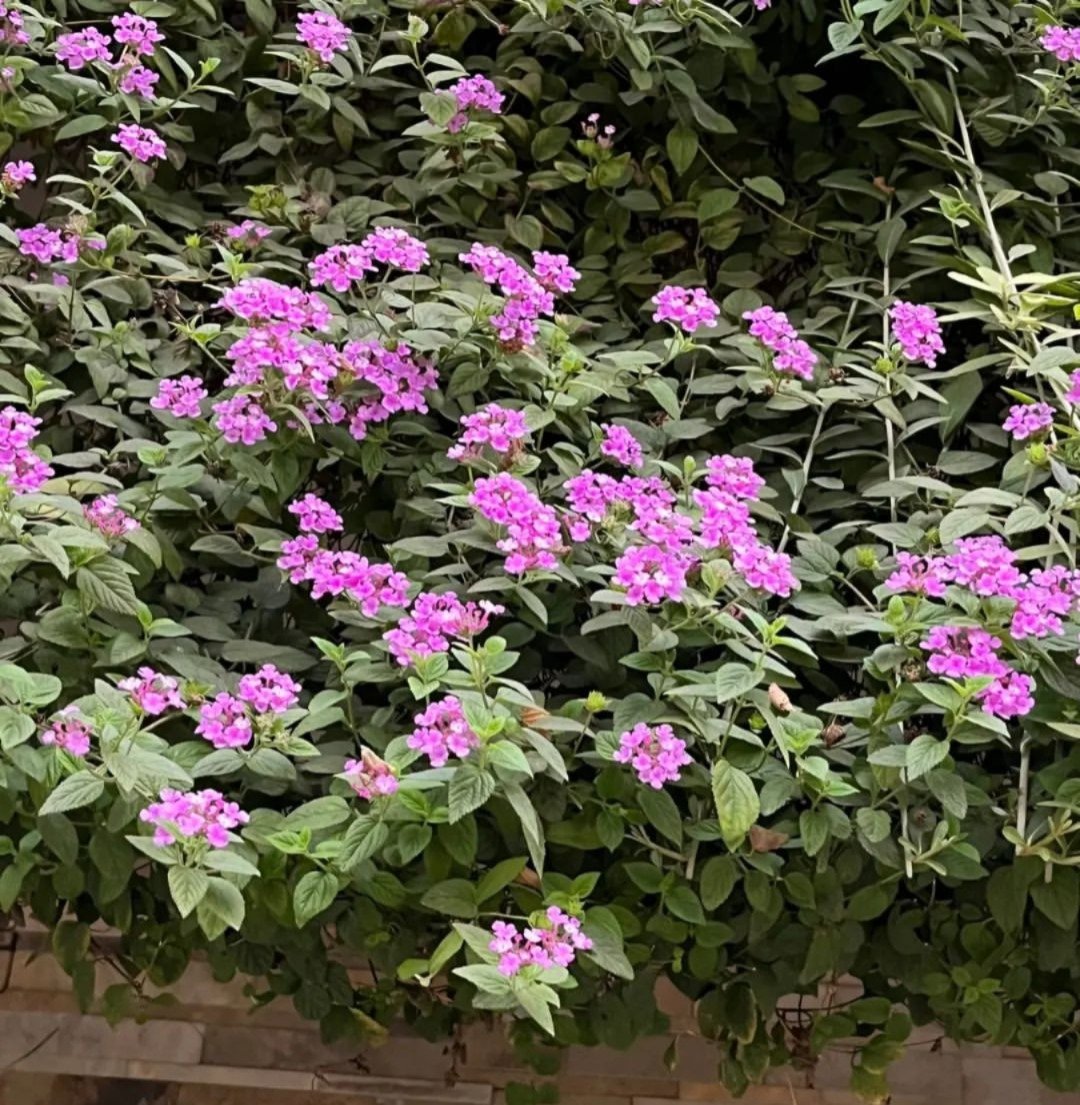
Trailing Lantana is a low-growing, spreading plant that produces clusters of small flowers in shades of purple, pink or white.
Key features:
- Grows 1-2 feet tall
- Flowers almost year-round in Florida
- Drought-tolerant
- Attracts butterflies and hummingbirds
According to the University of Florida IFAS Extension, Trailing Lantana is an excellent choice for hanging baskets or as a ground cover in sunny areas.
Tips for Planting and Maintaining Ground Covers
Now that we’ve explored some great options for Florida ground covers, let’s talk about how to plant and care for them:
- Prepare the soil: Before planting, remove any weeds and loosen the soil. Most ground covers prefer well-draining soil.
- Choose the right location: Make sure to plant your ground cover in a spot that matches its light requirements. Some plants prefer full sun, while others do better in shade.
- Water regularly: While many of these plants are drought-tolerant once established, they’ll need regular watering when first planted. The University of Florida IFAS Extension provides helpful information on proper watering techniques.
- Mulch: Apply a layer of mulch around your plants to help retain moisture and suppress weeds. Just be careful not to pile mulch against the plant stems.
- Fertilize sparingly: Most ground covers don’t need much fertilizer. When you do fertilize, use a slow-release, balanced fertilizer.
- Prune as needed: Some ground covers can become invasive if not kept in check. Trim back any plants that start to grow where you don’t want them.
- Be patient: It can take time for ground covers to fill in completely. Don’t be tempted to overplant – give your plants room to spread.
Benefits of Using Native Florida Plants
Many of the plants we’ve discussed are native to Florida. Using native plants in your landscaping has several benefits:
- Adapted to local conditions: Native plants are already adapted to Florida’s climate, soil, and rainfall patterns.
- Support local wildlife: Native plants provide food and habitat for local birds, butterflies, and other wildlife.
- Low maintenance: Once established, native plants often require less water and fertilizer than non-native species.
- Environmentally friendly: Native plants help preserve Florida’s natural ecosystems.
The Florida Native Plant Society is a great resource for learning more about native Florida plants.
Combining Ground Covers for Maximum Impact
While each of these ground covers is beautiful on its own, combining different types can create stunning effects in your garden. Here are some ideas:
- Texture contrast: Pair the fine, grass-like leaves of Mondo Grass with the broader leaves of Asiatic Jasmine.
- Color combination: Plant Blue Daze near Beach Sunflower for a beautiful blue and yellow color scheme.
- Height variation: Use taller ground covers like Coontie at the back of a border, with lower-growing options like Perennial Peanut in front.
- Seasonal interest: Combine plants that bloom at different times of the year to ensure year-round color in your garden.
Remember, when combining plants, make sure they have similar light and water requirements.
Florida’s unique climate offers both challenges and opportunities for gardeners. By choosing the right ground cover plants, you can create a beautiful, low-maintenance landscape that thrives in Florida’s heat and humidity.
Whether you’re looking for something to cover a large area, add color to your garden or provide food for local wildlife, there’s a Florida ground cover plant that’s perfect for your needs. From the vibrant flowers of Beach Sunflower to the lush green of Asiatic Jasmine, these plants offer a wide range of textures, colors and growth habits to suit any garden style.
Remember to consider factors like sun exposure, soil type and water needs when choosing your ground covers. And don’t be afraid to experiment with different combinations to create your own unique garden design.
With the right ground cover plants, you can transform bare patches of soil into beautiful, thriving areas of your garden. Not only will this improve the look of your landscape, but it can also help control erosion, reduce water usage and support local ecosystems.
So why wait? Start planning your Florida ground cover garden today and enjoy a beautiful, low-maintenance landscape for years to come!

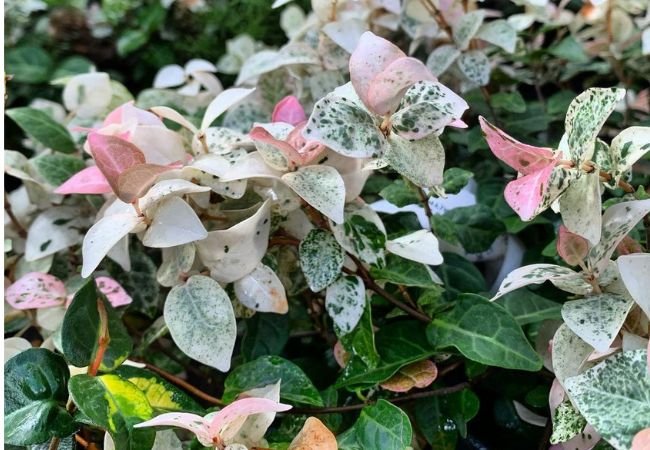






Leave a Reply